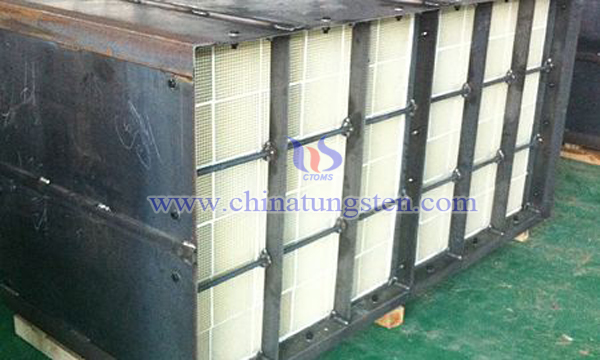Iron-Tungsten Composite Oxide SCR Denitration Catalyst
- Details
- Category: Tungsten Information
- Published on Thursday, 30 May 2019 17:59
Nitrogen oxides (NOx) are the main pollutants causing acid rain and photochemical smog. Their emissions mainly come from fixed sources such as coal-fired boilers, industrial furnaces and mobile sources such as motor vehicle exhaust. With the strengthening of China's environmental protection policy, emission reduction standards are constantly improving and economic operation.
Selective catalytic reduction (SCR) is a catalytic process in which the reductant reacts preferentially with NOx in flue gas to produce nitrogen (N2) in the presence of oxygen. The SCR technology using NH3 as reducing agent can achieve 80-90% of the removal efficiency of NOx, and the highest denitrification efficiency. It is also the most mainstream, mature and widely used commercial denitrification technology internationally recognized at present.

Researchers at home and abroad have done a lot of work on the development of new SCR denitrification catalyst. For example, iron-based catalysts have good redox performance. They are widely used, non-toxic and inexpensive. They have attracted the attention of researchers at home and abroad and are considered as potential NH3-SCR catalysts. However, iron-based catalysts usually have high denitrification activity temperature, poor water resistance, sulfur resistance and thermal stability, and complex preparation process, which limits their large-scale industrial applications. Tungsten oxide is often added to SCR catalyst as catalyst promoter. The addition of tungsten can not only increase the surface acidity of the catalyst, improve the activity of the catalyst, but also improve the thermal stability of the catalyst. Therefore, combining the redox performance of Fe with the surface acidity provided by W, it is possible to obtain SCR denitrification catalyst with high activity.
The preparation process of ferrotungsten complex includes:
(1)dissolve the soluble salt of tungsten in water and prepare a solution for reserve; dissolve the soluble salt of iron and ascorbic acid in water and prepare a solution for reserve;
(2)Take the above tungsten-containing solution, keep its temperature at 25-40 ℃, then slowly drop the iron-containing solution into it under stirring, keep the pH of the mixed solution in the range of 6-10 during the dripping process, keep the pH after dripping, continue to stir and aging, so as to complete the precipitation of iron ions;
(3) The precipitation of step (2) is washed, dried, and the dried sample is ground into powder. The sample is roasted at 450-550 ℃ to obtain flake-like iron-tungsten composite oxide.
The iron-tungsten composite oxide can be used as an SCR denitration catalyst for removing nitrogen oxides from the exhaust gas of fixed source flue gas, diesel exhaust gas and lean-burn gasoline engine. The catalytic activity is high, and the catalytic effect is good at 225-450 °C. The catalytic temperature is good, wide range and excellent performance.
- Tungsten Oxide Manufacturer & Supplier, Chinatungsten Online: www.tungsten-oxide.com
- Tungsten News & Prices of China Tungsten Industry Association: www.ctia.com.cn
- Molybdenum News & Price: news.molybdenum.com.cn
- Tel.: 86 592 5129696; Fax: 86 592 5129797; Email: sales@chinatungsten.com



 sales@chinatungsten.com
sales@chinatungsten.com